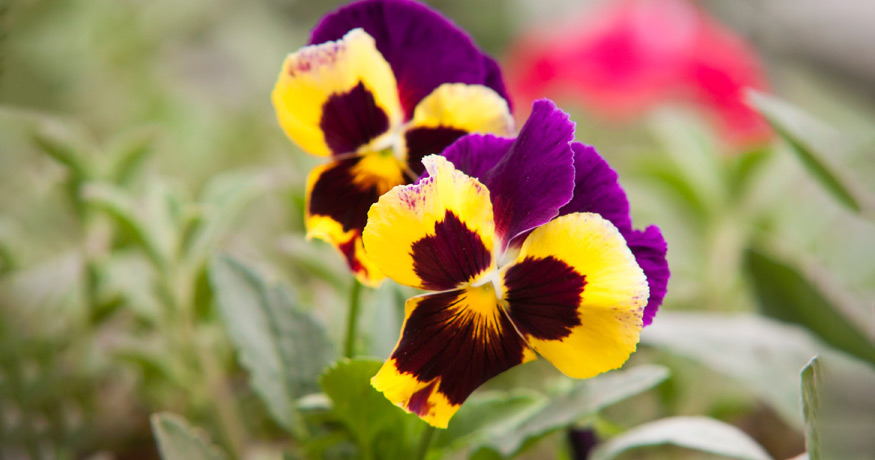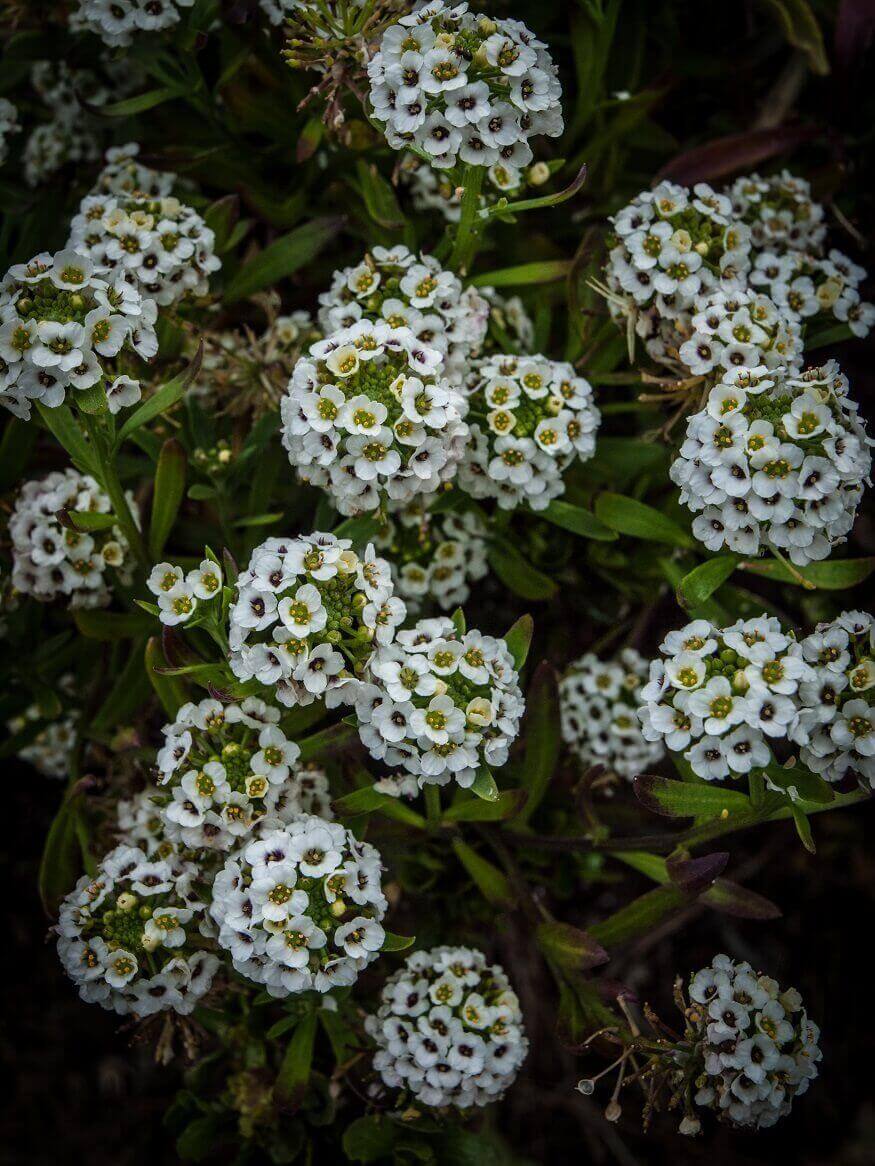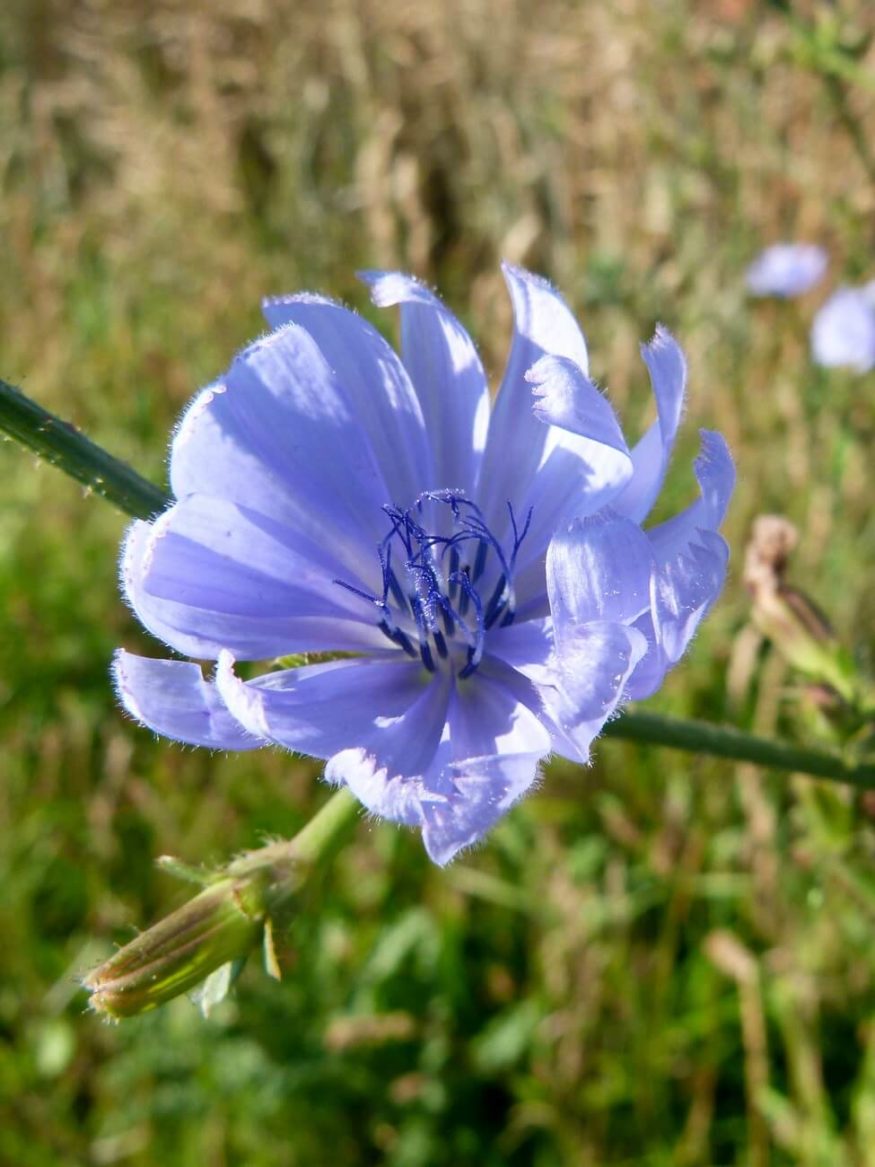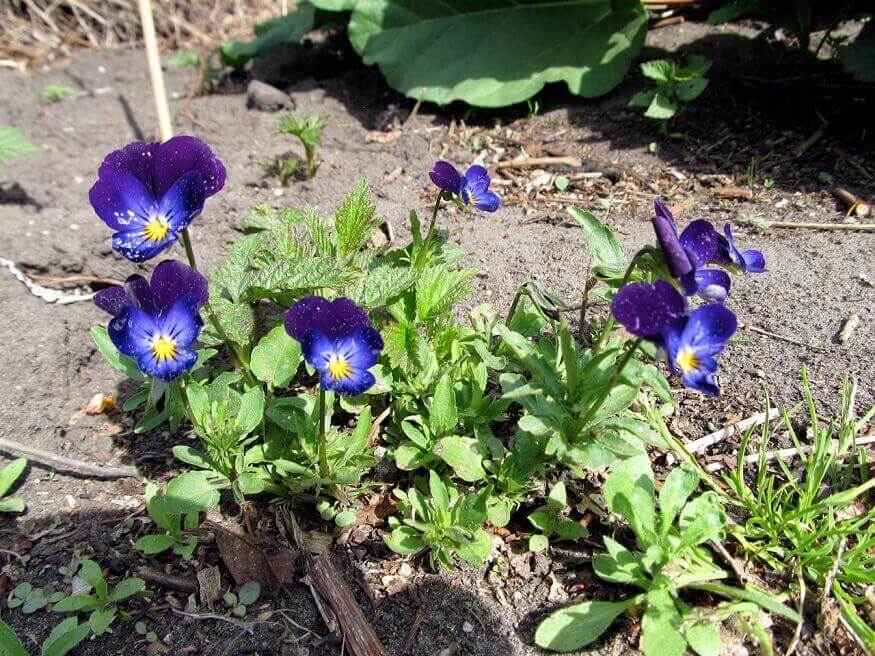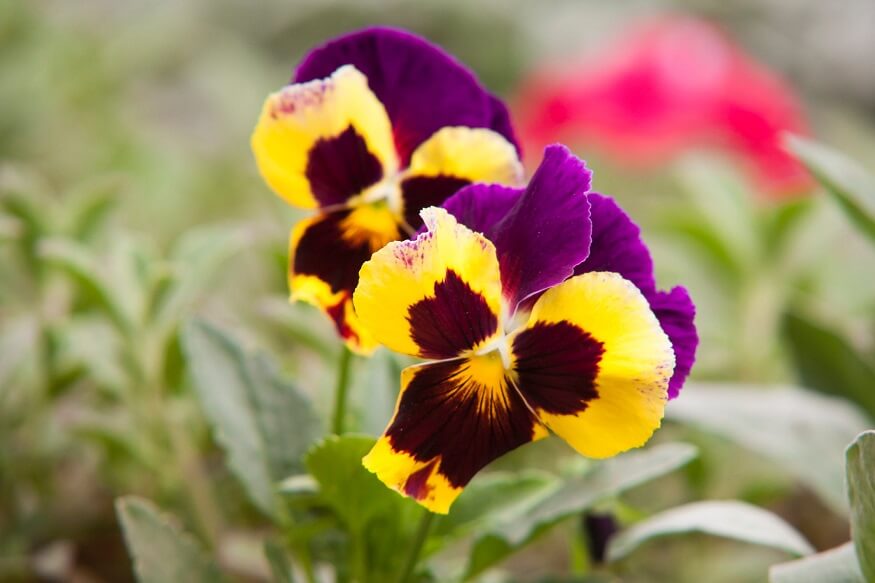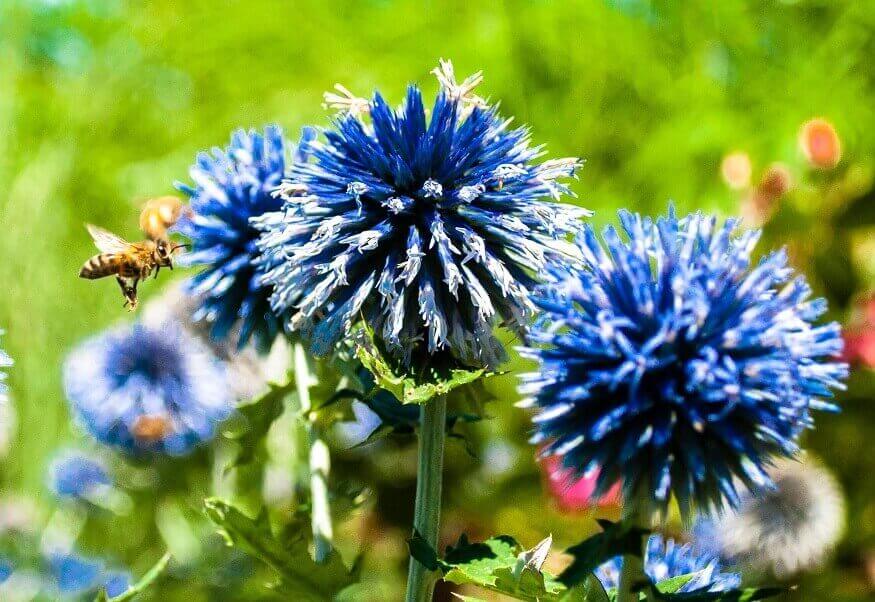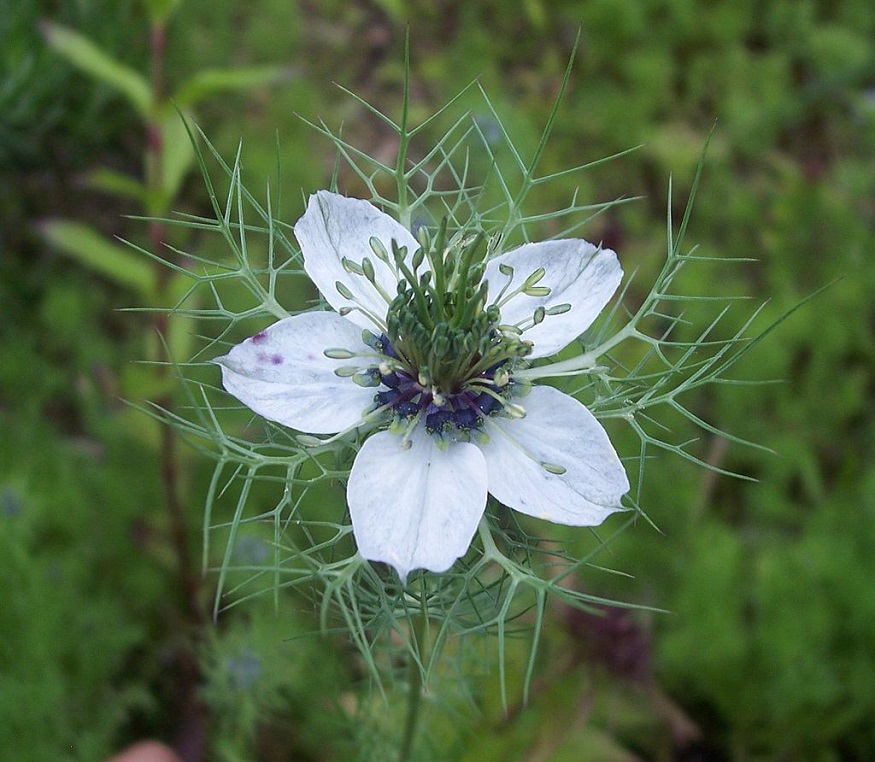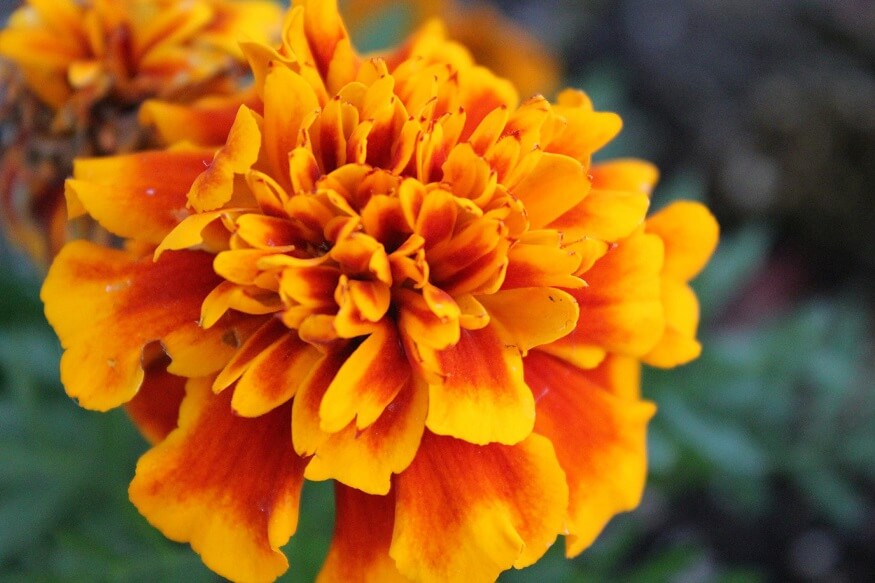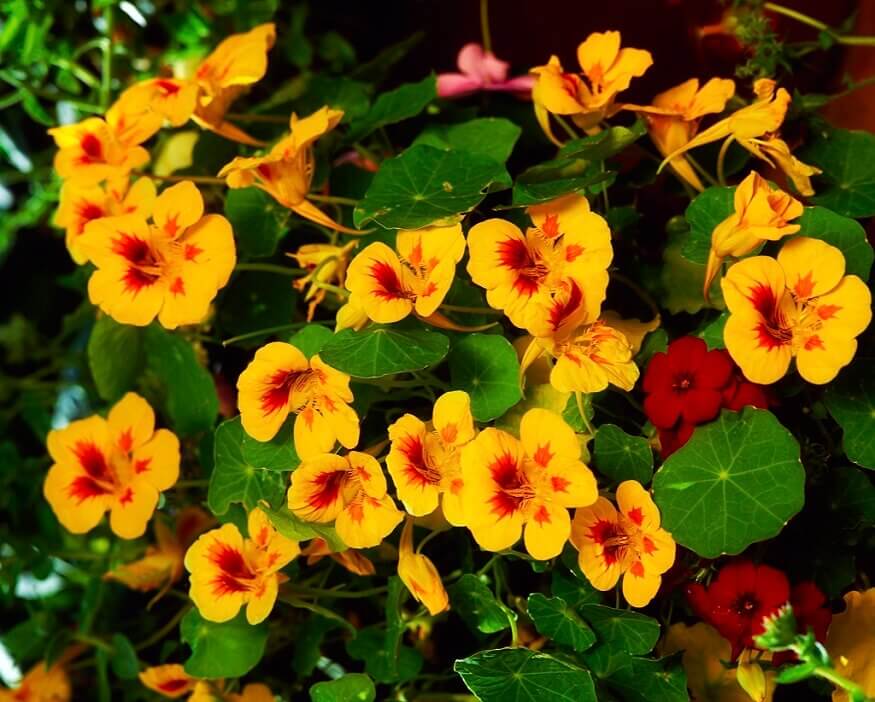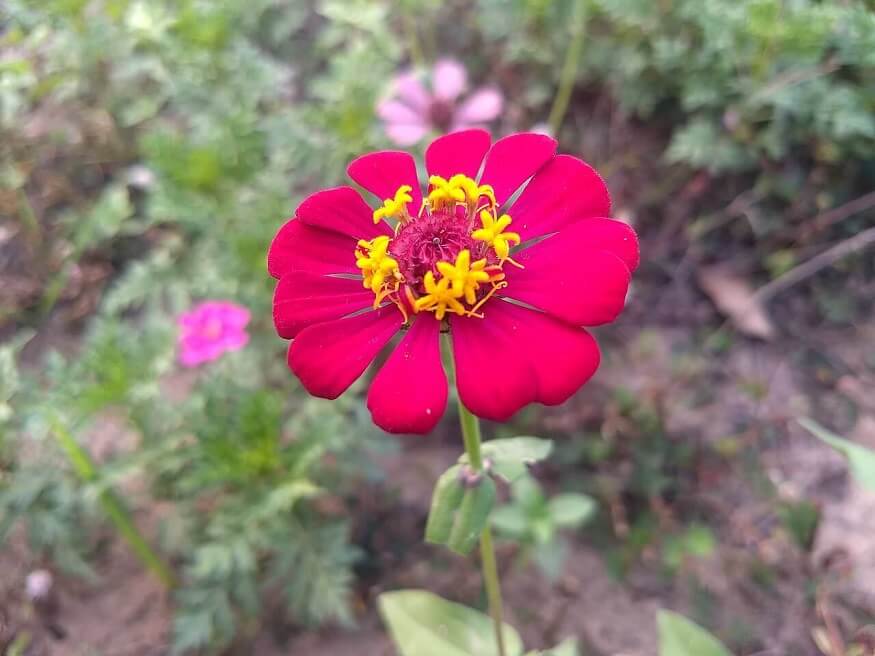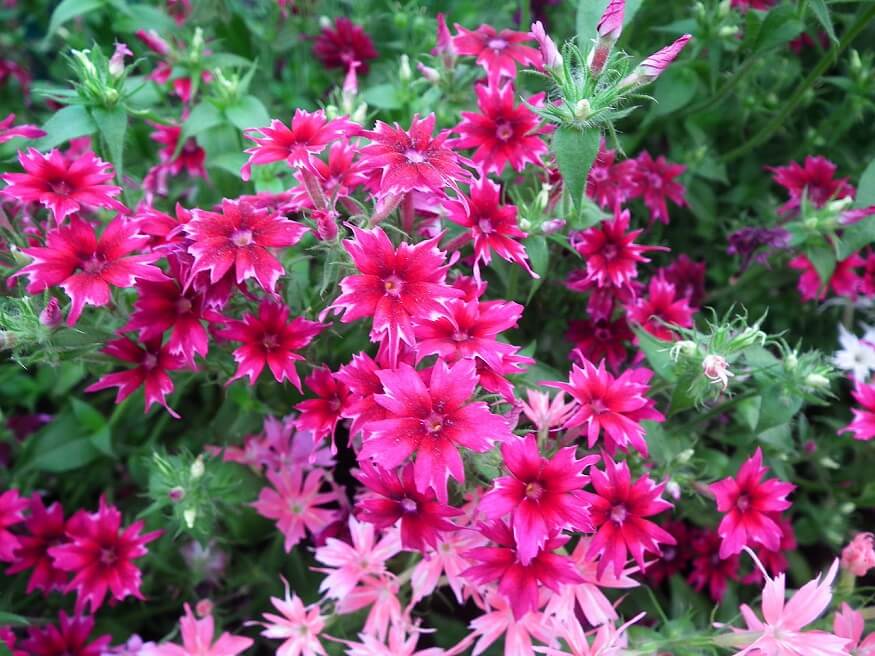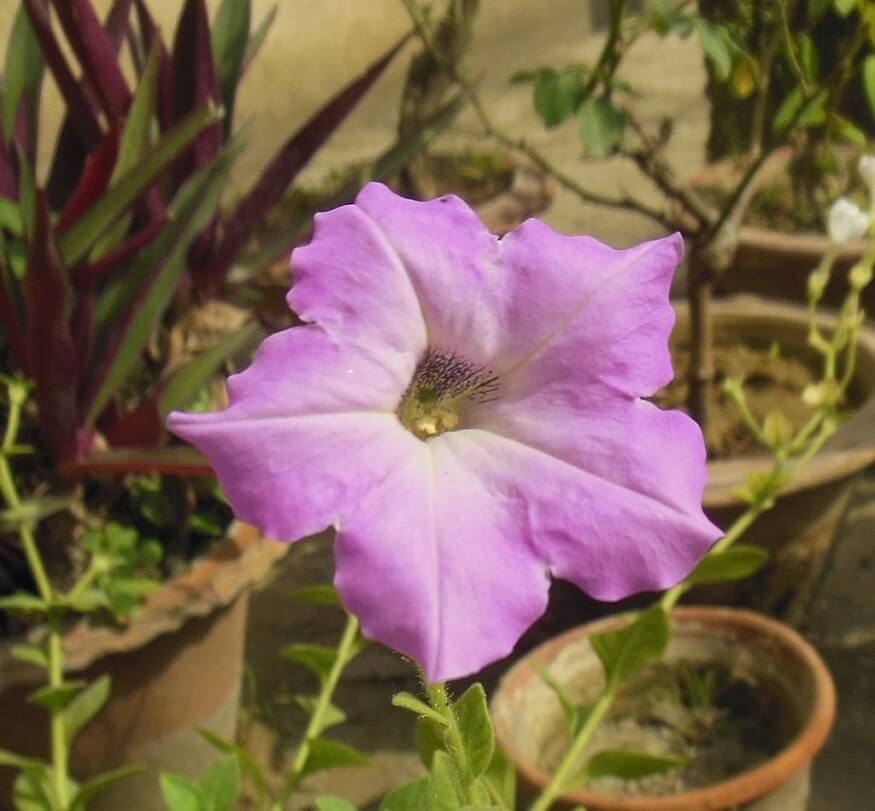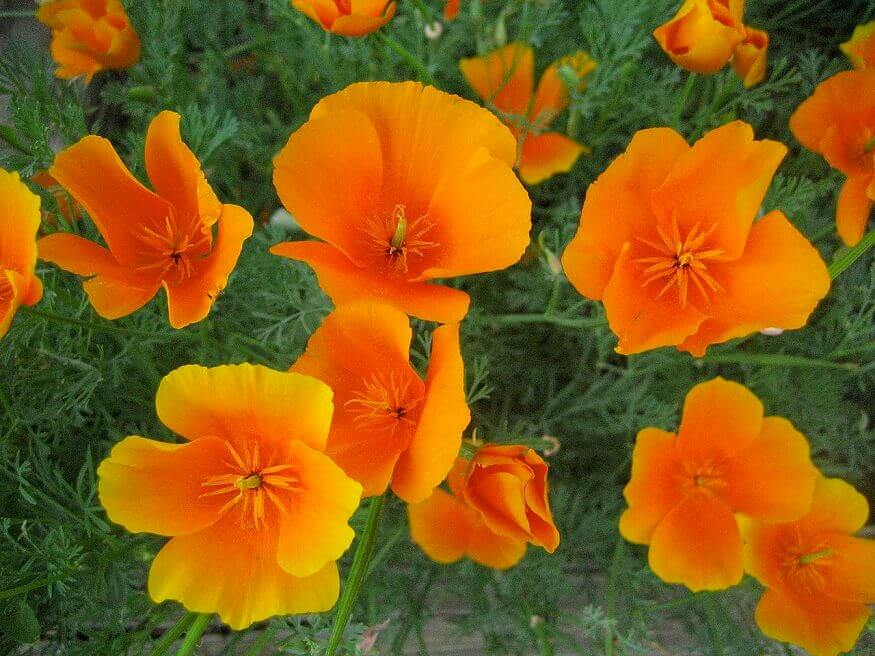It’s no secret that gardening requires a lot of patience, but did you know that there are certain flowers that can bloom in a shorter time? If you’re impatient or missed the planting season, caring for fast growing flowers can be more practical. They are great for DIY arrangements. Plus, they make your garden beam with life since the area is more inviting for birds and bees to pollinate.
Everyone has flowers that they love, so we made sure to include a wide selection of fast bloomers we know you’ll love!
Fast Growing Flowers from Seeds
1. Sweet Alyssum
Sweet alyssum, a low-growing flowering plant known for its delicate, small, and four-petal blooms, lands on our list. Sweet alyssum looks gorgeous wherever you decide to grow them, on their own or as an accent piece to a larger, more colorful landscaping project.
How long does it take for sweet alyssum to bloom?
Within six to eight weeks, you will get a fully-bloomed and mature sweet alyssum from seed – provided that you diligently take care of the plant. Overall, this flower is very easy to grow and can be planted in the early spring. It will even bloom again the next spring, so you will not need to buy another package of seeds.
How to take care of sweet alyssum?
As a rule of thumb, sweet alyssum loves sunlight but hates prolonged exposure to heat and dryness. Every week, give the plant an inch of water. Too much water can lead to rotting. As for the soil, choose loamy soil, and only use fertilizer if soil quality is poor.
Benefits
Growing a sweet alyssum can also be beneficial for your garden. It attracts beneficial insects while keeping pests away. This flowering plant is also a key decoration piece during the 4th of July and Memorial Day. Many florists use sweet alyssum in flower arrangements because of the bloom’s delicate yet beautiful appearance. It also has a fragrant smell, which works well in DIY perfume projects, as well as in flower arrangements.
2. Bachelor Button
Bachelor Button, a European native plant, is widely known for its blue blooms, but you can also get it in other colors, like red and white.
How long does it take for Bachelor Button to bloom?
Bachelor Button grows very fast– only taking about a week to 10 days to flower for annuals. If you have perennial species, it can take a little bit longer. This flowering plant is also self-seeding, which means that it will return every year with little effort on your part.
How to take care of Bachelor Button?
Water Bachelor Button weekly. Add mulch on top of the soil to retain moisture.
Benefits
Pearsons Florist tells us that these bright blue flowers look great in a DIY cut flower arrangement, and as a bonus, they will also last for many days.
At the end of the season, gather its stems and leave them behind. Wildlife will either eat them or take them to build a home or nest. Either way, the animals that live near your garden will appreciate having them.
Bachelor Button offers a variety of benefits for culinary and medical uses. Rich in anti-inflammatory property, you can use a Bachelor’s Button, specifically the juice from its stem, as a mouthwash and to improve gum health. With a mild clover-like taste and aroma, it is great for cooking and garnishing. You can even use its petals as a food dye.
3. Calendula
Third on our list is the calendula. This flowering plant is known for its vibrant blooms, but it is also highly regarded for providing medicinal benefits.
How long does it take for calendula to bloom?
On average, it will only take 6 weeks to mature – with little care needed. You can grow it outside in your garden or indoors in a pot – it is a hardy plant that likes to grow pretty much anywhere.
How to take care of calendula?
For outdoor growing, calendula requires sun and regular watering. Caring for it indoors is easier. All you need is to maintain a moist soil. However, you should keep in mind that calendula hates warm and humid temperatures. As much as possible, keep the plant in an area where it can receive indirect sunlight.
Benefits
Calendula works as a medicinal herb in teas, and can be added to a healthy salad. While in the garden, they repel pests and help improve your soil, making it easier to grow something else in that plot later.
This flower has many health benefits. Learning to dry and use them can be a great tool to have at home.
4. Johnny Jump-ups
With vibrant and attractive blooms, Johnny Jump-Ups add a touch of “pop” to any garden. Moreover, it spreads easily and self-seeds yearly. If you want your garden to be filled with Johnny Jump-Ups, be sure to hold off on trimming the wilting flowers.
How long does it take for Johnny Jump-ups to bloom?
Waiting time is only between 14 and 21 days, making them perfect for a last minute addition to your garden.
How to take care of Johnny Jump-ups?
One thing you should know about this flowering plant is it prefers some moisture but does not like soaked soil. Other than that, it is relatively easy and simple to grow.
Benefits
Johnny Jump-Ups have anti-inflammatory benefits, which are widely used as a topical treatment for acne and other skin conditions. As for its flower, it is edible with a subtle wintergreen mint taste.
5. Pansies
Pansies are widely admired due to their large tri-color blooms. They are often added in flower vase arrangements, as well as bouquets.
How long does it take for pansies to bloom?
You can add pansies to your garden in the late summer or fall. It usually takes between 7 days to 3 weeks for you to enjoy fully bloomed pansies.
How to take care of pansies?
For faster blooming times, plant pansies when it is warmer outside. This is because the temperature of the soil affects their growing time.
Benefits
Pansies are incredibly beautiful. Not only in the garden, but also inside your home. Whether as a part of a flower arrangement or a stand alone decor piece, many admire the beauty of pansies.
Pansies also work perfectly for DIY projects. For instance, you might consider adding them to a flower crown or drying them for potpourri. In addition to being a natural and vibrant ornament for your apartment, pansies come with nutrients and antioxidant properties. It is also safe to eat too!
If you find pansies in the wild, you might want to consider digging up a few and adding them to your garden. (If they are in an area where you are allowed to do that, of course.) Wild pansies are known to provide a variety of benefits.
6. Cornflowers
Cornflowers are known for their distinctive shape and coloration, but this flowering plant is more than just its looks!
How long does it take for cornflowers to bloom?
This flowering plant will only take 7 to 10 days to bloom.
How to take care of cornflowers?
Cornflowers prefer sunny spots and a rich soil.
Benefits
If you want a fast growing flower that has a variety of benefits, then this is one of your best options. They are not picky when it comes to their environment either. It can help alleviate fever, congestion, and constipation.
7. Nigella
Nigella is a simple and elegant flower, which is also great for medicinal use, especially when you harvest and use its seeds. Its seeds are called black cumin.
How long does it take for nigella to bloom?
A nigella flower will take about 10 to 14 days to grow. This is in about 60 degree weather too. That is not a lot of time to wait for a flower, especially one that produces seeds with so many benefits.
How to take care of nigella?
Caring for nigella is straightforward. Make sure that it receives enough water and sunlight. Partial shade is also suitable.
Benefits
Cumin is a very useful natural herb to have around the house. It contains antioxidants, which can lower cholesterol, kill bacteria– and much more! Do you want to attract more bees? Plant a nigella! Bees love this flowering plant.
8. Marigold
Thanks to its bright orange blooms, Marigolds add a touch of summer and autumn in your garden.
How long does it take for marigolds to bloom?
Marigolds take about 8 weeks to bloom, however, they are very easy to grow and require little attention. If you want an easy flower to take care of, then this is a great choice.
How to take care of marigolds?
You can make this flowering plant grow faster by ensuring it gets sunshine at least 6 hours a day. Plus, you don’t need to put a lot of fertilizer. Using too much will make the leaves grow, but the flowers will barely bloom.
Benefits
Marigolds are great to have in your garden. The roots emit a chemical that might keep nematodes at bay– small worms that eat the roots of other plants. They also are known to attract ladybugs that protect your plants from aphids. Because of this, you may want to plant them near your vegetables.
The bright yellow color also works wonders as a decorative piece. They come in many different bright colors as well.
9. Nasturtiums
If you want a reliable flowering plant to help out when you are sick, then this one can do the trick. It contains a ton of vitamin C, which is known to boost your immune system. A natural antibiotic, you can also use nasturtiums as a remedy for sore throats and even mild flu.
How long does it take for nasturtiums to bloom?
To enjoy nasturtiums’ flowers, it can take 35 up to 52 days. Of course, this depends on growing conditions and other factors.
How to take care of nasturtiums?
Ideally, you’d want to plant nasturtium seeds during early spring when the soil is moist. Keep the plant in full sun and do not fertilize. Partial shade and fertile soil will make the foliage grow but not initiate any blooms.
Benefits
When blooming, it can attract beneficial insects. It is also a great plant to add with a vegetable garden or sensitive roses because they keep pests at bay. Not only that, but aphids love them and will choose them over other plants.
So, if you have a ton of plants and veggies that are suffering at the hands of aphids, this flower makes a great “sacrifice.” Aphids will leave your other plants alone in favor of this one.
10. Zinnias
If you live in an area with extreme heat in the summer, this flower will still bloom. Zinnias do well in hot conditions. Plus, they are bright, colorful, and simply beautiful! The blooms will look great in a DIY floral arrangement!
How long does it take for zinnias to bloom?
With proper care and ideal growing conditions, you can have zinnias with blooms around 60 to 70 days. Take note this estimate is from seeds to flowers.
How to take care of zinnias?
This self-seeding plant is even resistant to lower levels of frost and takes barely any effort to get them to grow. If you need a hardy plant, this is perfect. Planting the seeds is even simple – just sprinkle them on your plot and toss some soil onto them.
Benefits
Bees and butterflies can’t get enough zinnias too – they love the bright blooms of zinnias. So if you want to attract those pretty insects to your garden, you can add a few of these.
11. Annual Phlox
Phlox is a native plant to much of America. Because of that, it is accustomed to growing in many different types of environments. It can thrive in tough conditions and offer multiple blooms before wilting.
How long does it take for phlox to bloom?
The seeds germinate in 10 to 30 days, depending on the weather. You can enjoy the blooms for as long as 6 weeks!
How to take care of phlox?
Phlox will thrive at a sunny location. However, don’t let the soil dry out! The soil should always be moist. Adding compost can be beneficial too.
Benefits
This flowering plant can attract bees, butterflies, hummingbirds and other native pollinators in America. So, if your garden is missing pollinators, this is the perfect flower to attract a wide variety of them. Phlox is resistant to mildew and mold, which is important if you live in a humid area.
12. Petunias
Petunias are perfect as companion plants to your garden, especially if you are growing decorative flowers or vegetables. They work similar to a pesticide but without any of the harmful chemicals.
How long does it take for petunias to bloom?
You can expect amazing petunia blooms in about 6-8 weeks.
How to take care of petunias?
You need to grow petunias in full sunlight, especially if you do not want them to take a long time to grow.
Benefits
If you constantly feel like you are waging war against pests in your garden, then get yourself some petunias. It can repel pests including the asparagus beetle, nematodes, aphids, and leafhoppers. They work against other kinds of beetles too, just not as well.
The blooms are beautiful and can be added to hanging baskets or other smaller containers.
13. California Poppies
Having poppies in your garden can make the area beam with bright colors and flamboyance!
How long does it take for poppies to bloom?
Are poppies fast bloomers? From seed to full-bloom, you can expect around 60 days.
How to take care of poppies?
Poppies thrive in full sun, especially if they are able to get 12 hours of sunlight. Watering, on the other hand, should be light – too much water can impede growth. Using a fertilizer is not necessary, unless you want more foliage than blooms.
Benefits
This type of poppy is more than just California’s official state flower. It has many different uses. It can help with insomnia, anxiety, and muscle pains. The flower was also used traditionally to help prevent children from wetting the bed at night.
14. Sunflowers
With its bright yellow bloom, a sunflower is one of the most well-loved flowering plants that you can grow in your garden.
How long does it take for sunflowers to bloom?
Sunflowers do take the longest on this list, but the benefits are worth it. Plus, for as large as the flowers get in a relatively short amount of time, you are getting your money’s worth from the seeds you buy.
Sunflowers mature in an average of 3 months, but it can bloom in 70 to 100 days – depending on the conditions after being planted.
How to take care of sunflowers?
Plant sunflower seeds under 1-¼” of soil and add light fertilizer. For maximum growth, keep the seeds at least 6-inches apart.
Benefits
The seeds that come from sunflowers are high in protein and healthy fats, making them an excellent snack to have on hand. These seeds contain antioxidants which have many health benefits.
If you are low in vitamin Bs, eating some sunflower seeds daily can help too. It is loaded with B-complex vitamins including Biotin, B12, B6, and more. Studies have shown that these nutrients can help improve the immune system, as well as energy levels.
The Wrap Up
Did you enjoy the list? These flowers all bloom quickly, meaning they attract good insects to your garden faster than other plants. Plus, if you missed the beginning of the growing season, you do not have to miss out on getting fresh plants for your DIY projects.
Browse great content about HTML coding in our blog section. You will find great tips on how to implement user-friendly features in your website.
